New Romney Historic Buildings
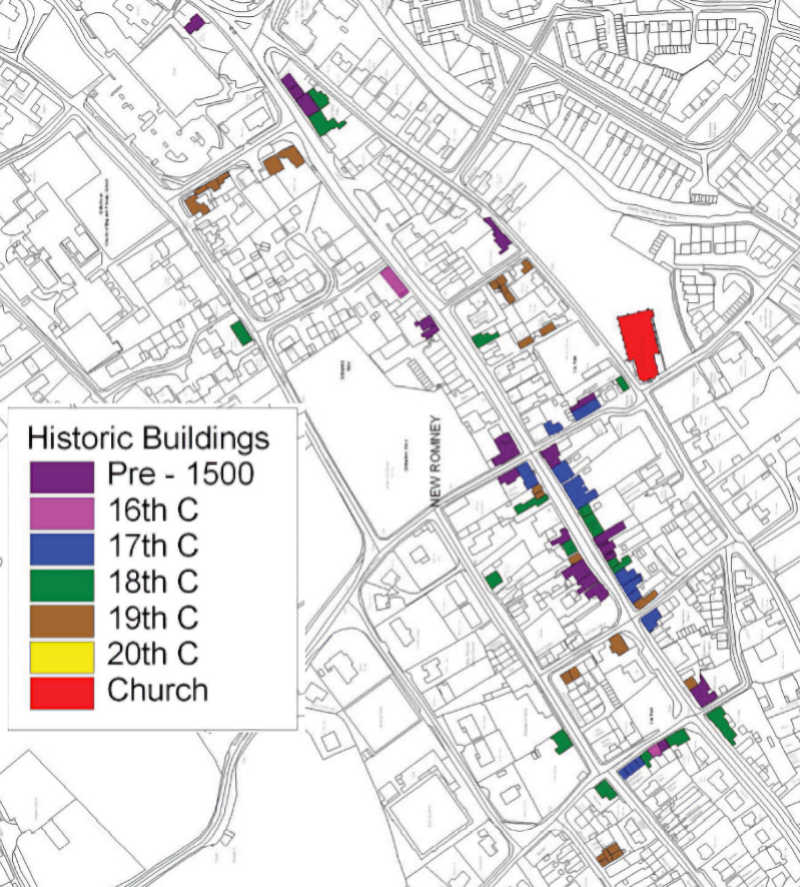
Map of Historic Buildings In New Romney

3 and 4 West Street New Romney
The building dates from 1310 and is one of the earliest surviving small domestic dwellings in the country. The building originated as a stone built hall house and was subsequently altered by the construction of a timber and stone jettied cross wing c1400. Around c1500 an enormous stone and brick stack replaced the open hearth in the Hall.
Originally one property which has been divided into two, it was an early 14th Century domestic building of high social status which may have been a merchant's house when New Romney was a busy port. The building is stone-fronted, with its original 14th Century two-centred Gothic doorway still in place; it has seen many alterations including a jettied 15th Century crosswing and 18th windows.
Built of mainly of stone rubble with some brick patching and weatherboarded upper floor to crosswing. It has a tiled roof, gabled to main range, hipped to crosswing and two brick chimneystacks. The north and south ends of the building are concealed by later buildings.
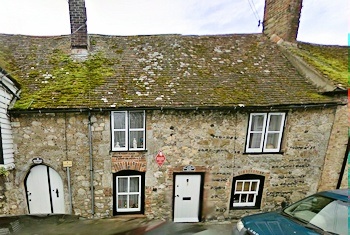

The Assembly Rooms and Schoolroom are located in Church Approach just off the High Street. Said to have been erected as the meeting place of the Courts of Brotherhood and Guestling, consisting of the representatives of the Cinque Ports and the Ancient Towns, without their dependent members in the case of the Court of Brotherhood and with them in the case of the Court of Guestling. The building was then called the hall of the Ports. It was also used as Assembly Rooms.
The Schoolroom is a small room adjoining on the North West, The Schoolroom was erected in 1676, the Assembly Rooms probably soon afterwards. The Schoolroom is a small building with a plain front and the date 1676 on it. The Assembly Rooms are of red brick, brown brick and grey
headers.

c1962

Located in the High Street next to the Town Hall, this gaol was built in 1750.
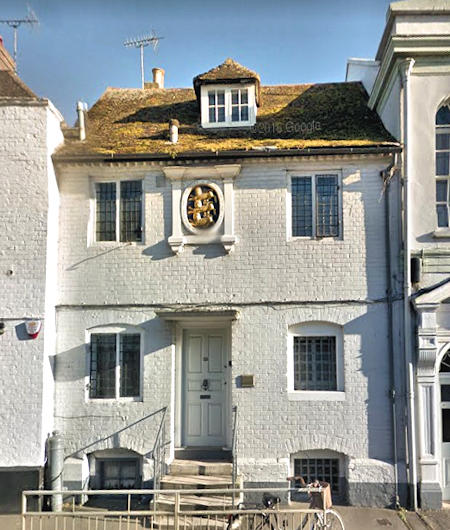

To the rear of the house are the ruins of a mediaeval Cistercian Priory founded in the 13th Century. The main part of these consists of a small building of stone rubble with a tiled roof.
What remains of St John’s Priory, also known as Romney Priory, is only a tiny fragment of the original complex, consisting of one small building of uncertain function and a length of boundary wall. Both are embellished with a variety of architectural ornament of various periods – pointed doorways, window tracery, corbel heads – but much of this is believed to be antiquarian salvage from other buildings, possibly including the nearby ruined church of Hope All Saints.
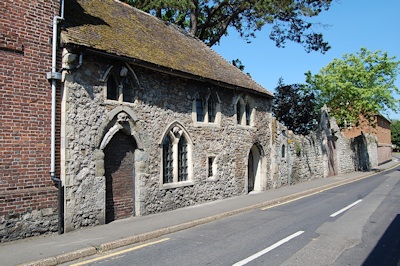

New Romney Town Hall is located on the High Street. It was erected in 1702 on an open arcade, refaced in the early 19th centuryC19 and the ground floor was built in 1884.
A lock-up for incarcerating petty criminals was erected to the east of the town hall in the mid-18th century and the town hall was given a new stucco façade in the early 19th century.
Following significant population growth, largely associated with farming, the area became a municipal borough in 1885, the courtroom was adapted to serve as a council chamber for the new council. Visitors to the town hall in the 20th century included the former Prime Minister of Australia, Sir Robert Menzies, who toured the area shortly after he was appointed Lord Warden of the Cinque Ports in 1966.
The Town Hall now houses the New Romney Town Council.
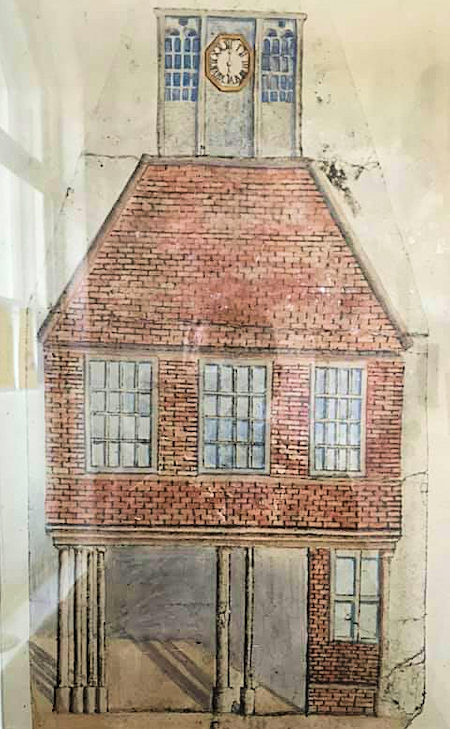
Original Town Hall c1827

Town Hall Today



